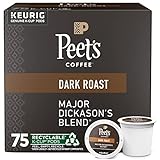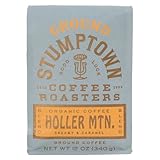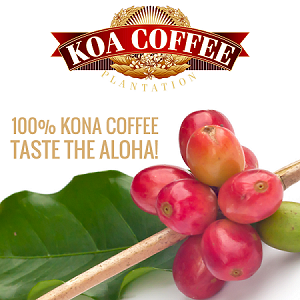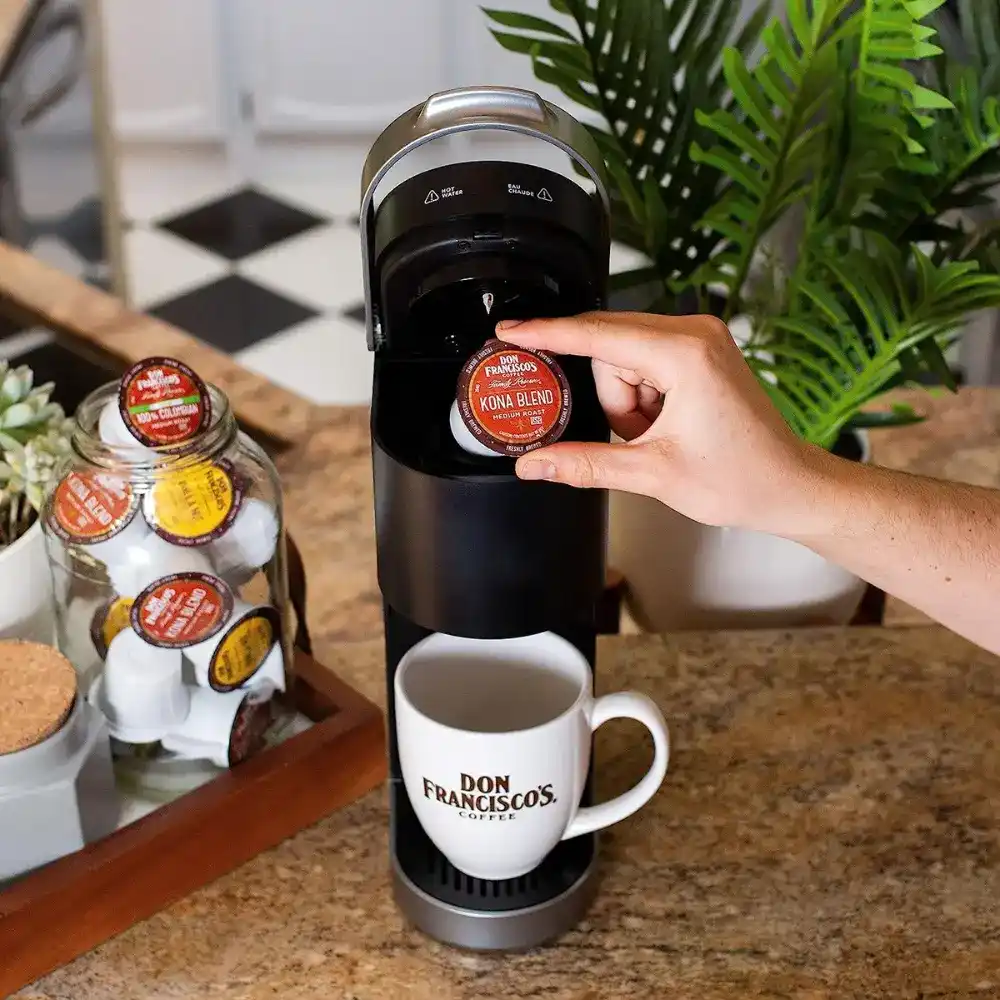In the universe of caffeine connoisseurs, an age-old debate has been simmering, and it’s not about sugar or cream. The quintessential question is, “Coffee Pods vs. Ground Coffee: Which Brews Better?” In an age where convenience often intersects with quality, it’s crucial to delve into this conundrum. While these pods offer the swift gratification of a hassle-free brew, ground coffee counters with the promise of a deeper sensory experience, that seductive aroma wafting from freshly grounded beans. So, how do we decide which side of the brewing fence to stand on? This article will shed light on the distinct qualities of both methods, revealing their respective advantages and potential drawbacks. It’s time to plunge headfirst into the caffeinated depths of this riveting discussion. Strap in, coffee lovers — it’s going to be a rich, flavorful ride.
Coffee Pods vs. Ground Coffee – Key Takeaway
- Convenience versus Craft: These pods offer unparalleled convenience with consistent results, while ground coffee provides a hands-on brewing experience that can be tailored to personal taste.
- Cost Considerations: The expense of coffee pods can add up over time, making ground coffee a more budget-friendly option, especially for regular drinkers of this lovely beverage.
- Flavor and Aroma: Ground coffee often offers a more diverse flavor profile and stronger aroma than the pods due to the ability to control factors like grind size and brewing technique.
- Environmental Impact: The use of coffee pods has been associated with increased waste, although more eco-friendly options are now available. Ground coffee, on the other hand, produces less waste and is typically more environmentally friendly.
- Freshness Factor: Ground coffee offers superior freshness when consumed shortly after grinding. In contrast, coffee pods are designed for longer shelf life but may not match the fresh taste of recently ground beans.
Understanding Coffee Pods
Coffee pods have revolutionized the way we enjoy our daily brew. In this section, we’ll explore the ins and outs of these convenient creations, delving into their design, functionality, and the potential pros and cons they bring to our routines.
What Are Coffee Pods?

Coffee pods, also known as coffee capsules, are a modern convenience for drinkers of this delectable beverage around the world. Each pod is a self-contained, single-serving packet of ground beans, encapsulated within a small plastic or aluminum container sealed with foil or filter paper. These pods are primarily designed for compatibility with specific models of single-serve machines. Companies such as Keurig, Nespresso, and Dolce Gusto are famous for their pod-based brewing systems, with each offering a vast variety of coffee types and flavors.
How Do Coffee Pods Work?

The operating principle of coffee pods is based on a simple yet effective method. The machine punctures the pod’s top and bottom to allow hot pressurized water to flow through the ground coffee, extracting the flavor as it passes. The process is as follows:
- Insert the coffee pod into the dedicated slot in the machine.
- Close the lid, locking the pod into place.
- Choose the desired brew strength and cup size, if your machine has these options.
- Press the start button and wait for your cup to fill with coffee.
In just a few moments, the machine provides a perfectly brewed cup of joe, complete with a rich aroma and taste, at the push of a button.
Pros and Cons of Coffee Pods
Like any product, coffee pods come with their own set of advantages and drawbacks. Understanding these can help you make an informed decision about whether they’re the right fit for your drinking habits.
Pros:
- Convenience: Coffee pods are easy to use, requiring little to no brewing knowledge. They also produce a quick cup of joe, perfect for those busy mornings.
- Consistency: Each pod is carefully measured and packed to provide a consistent taste and quality with each brew.
- Variety: There’s a plethora of flavors and types of this drink available in pod form, allowing you to experiment and switch between different kinds of coffee as per your preference.
Cons:
- Environmental Impact: A large number of these pods are crafted from plastic or aluminum, materials that aren’t biodegradable and consequently pose substantial ecological challenges. However, in response to these concerns, some brands have introduced compostable coffee pods, offering a more eco-friendly alternative.
- Cost: While the initial expense of a coffee pod machine may be affordable, the ongoing cost of the pods can add up over time, making them more expensive than traditional ground coffee.
- Compatibility: Not all pods are compatible with all machines, so you’re often restricted to using pods from the brand that makes your machine. Some manufacturers have introduced reusable pods that you can fill with your own ground coffee, which can help alleviate this issue.
Exploring Ground Coffee
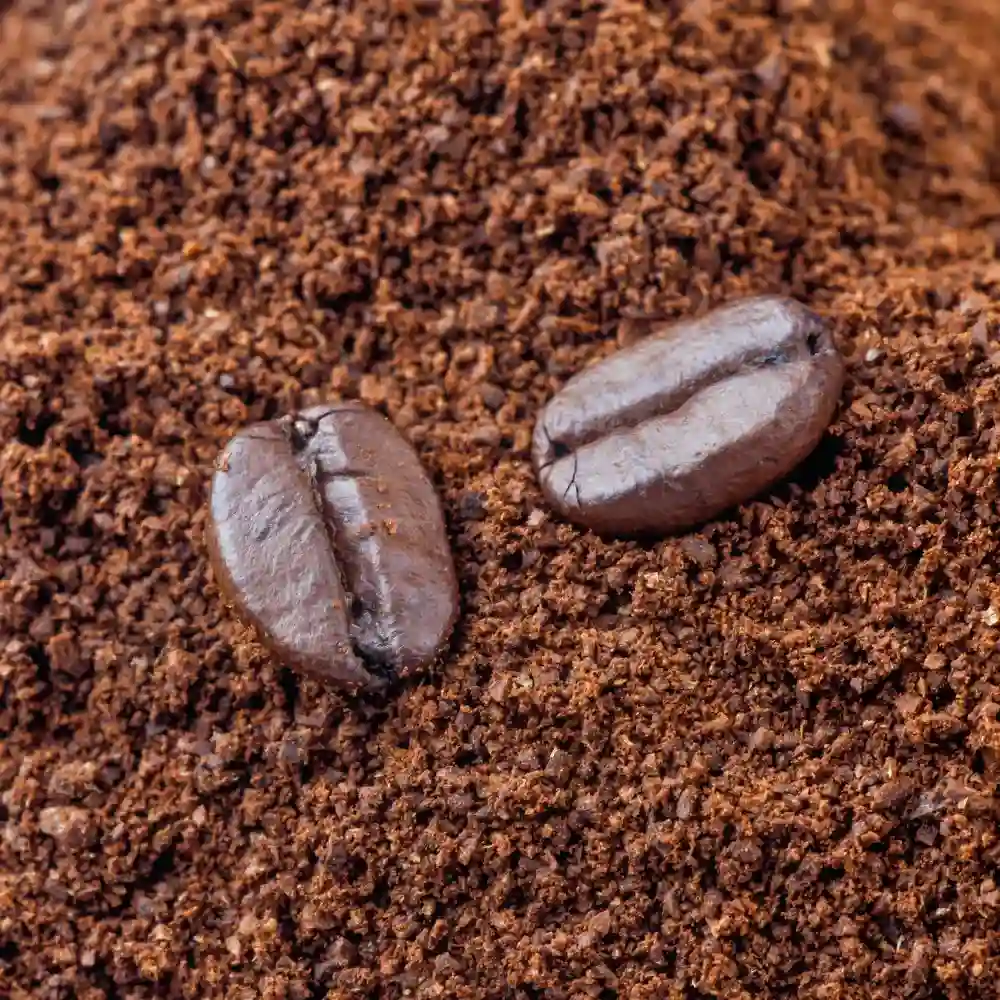
The intricacies of this delightful drink extend far beyond its capacity to wake us up each morning. In this segment, we take an in-depth look at the more traditional form of this beloved beverage: ground coffee. This immersive approach to brewing this beverage is an invitation to experience the journey from grind to pour firsthand, transforming the simple act of making a cup of joe into a personal ritual. This exploration will take us through the distinct versatility of ground coffee, the decision between whole beans and pre-ground options, and the crucial component of proper storage.
The Versatility of Ground Coffee
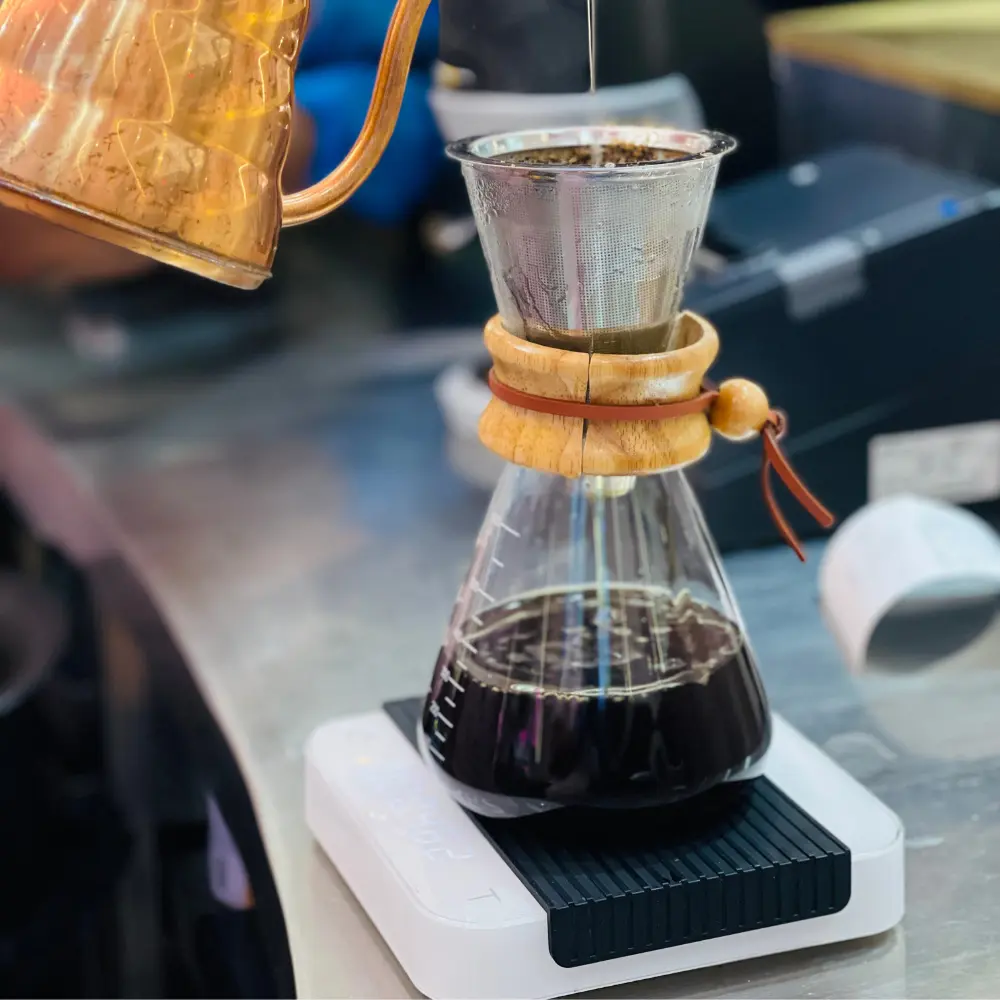
Ground coffee’s appeal stems not merely from its tantalizing flavor and aroma but significantly from its incredible versatility. Opening a bag of ground coffee is akin to opening a world of brewing possibilities.
- French Press: This brewing method accentuates bold, robust flavors, pulling out the deeper notes in this drink and creating a full-bodied brew. (1)
- Pour-Over: For those who prefer a delicate balance of flavors, the pour-over method teases out the complexities within the beverage, creating a cleaner and more nuanced taste.
- Automatic Drip Coffee Maker: Embodying convenience, this machine-based method requires minimal effort and yields a consistent, satisfying cup of joe every time.
The beauty of ground coffee lies in the flexibility it offers to all enthusiasts of this delectable drink, allowing for experimentation with different brewing techniques, water temperatures, brewing times, and coffee-to-water ratios to perfect your cup.
Grinding Options: Whole Beans vs. Pre-ground

When diving into the world of ground coffee, you are presented with a choice: purchasing whole beans and grinding them at home, or selecting pre-ground coffee.
- Whole Bean Coffee: Freshness is the driving force behind the option of whole bean coffee. The beans begin to surrender their flavors once they’re ground, meaning grinding your beans as you need them ensures optimal freshness. Moreover, the liberty to adjust the grind size according to your brewing method offers the opportunity for personalized flavor extraction.
- Pre-ground Coffee: Pre-ground caters to convenience. It eliminates the need for a grinder and saves the time spent on grinding. However, this convenience comes at the cost of some degree of freshness and control over the grind size.
The choice between whole beans and pre-ground hinges on personal preferences and the value placed on convenience versus control over the brewing process.
The Fresher, the Better: Storing Ground Coffee

The final, yet vital, aspect we’ll examine is the proper storage of ground coffee, a critical factor in maintaining its freshness and flavor. The moment a bag is unsealed, its exposure to air, light, moisture, and heat begins to degrade its quality.
- Storage: For optimal results, ensure that your grounds are stored in an airtight container placed in a cool, dark location. This reduces the coffee’s contact with environmental factors that could expedite its degradation.
- Quantity: Consider buying this beverage in smaller quantities more often. This practice ensures that you are always using the freshest coffee.
Remember, despite best storage practices, coffee is a perishable item. Its freshness has a finite lifespan, and it won’t stay fresh indefinitely. So, make sure you use it while it’s at its best.
Pros and Cons of Ground Coffee
As with most things in life, using these grounds comes with its own set of advantages and disadvantages. Here, we’ll evaluate both sides of the coin to give you a comprehensive understanding of what ground coffee entails.
Pros:
- Variety and Versatility: These grounds offer a broad spectrum of flavors and aromas. It also allows for a versatile range of brewing methods, from French press and pour-over to espresso and cold brew.
- Control Over Brewing: With ground coffee, you can customize the variables of brewing like grind size, water temperature, brewing time, and coffee-to-water ratio. This can significantly affect the taste and body of your cup of joe.
- A Richer Coffee Experience: The process of grinding and brewing your beverage can be a deeply sensory and satisfying experience, providing a connection to the coffee that is absent with other methods.
Cons:
- Freshness Concerns: These grounds begin to lose flavor as soon as it’s ground because of oxidation. Even with proper storage, it’s challenging to keep ground coffee as fresh as whole beans.
- Requires Equipment: To enjoy the freshest ground coffee, you’ll need a grinder. Quality grinders can be an investment and require regular maintenance.
- Time-Consuming: The process of grinding your cup of joe and preparing it using methods like the pour-over or French press can be time-consuming compared to other preparation methods, like coffee pods.
Taste and Aroma Comparison
Savoring a cup of joe isn’t just about the jolt of caffeine; it’s an experience engaging all your senses, particularly taste and smell. In the aromatic and flavorful world of this lovely beverage, the method of preparation can significantly influence your sensory journey. This section will dive deep into the fascinating ocean of tastes and the aroma of this drink, drawing a vivid comparison between the convenience-led coffee pods and the tradition-steeped ground coffee.
Assessing Flavor Profiles: Coffee Pods

Stepping into the domain of coffee pods, you’re entering a world where convenience meets a decent variety of flavors.
- Uniformity and Predictability: Each pod, housing a pre-measured and tightly packed quantity of coffee grounds, is a promise of consistency. The predictability might be a solace for those seeking a dependable flavor experience without much fuss.
- Variety: These pods offer an assortment of flavor profiles and intensity levels. They present an inviting playground for those willing to experiment without the labor-intensive process that other brewing methods might require.
- Freshness Consideration: While the pods provide convenience, the pre-ground coffee locked inside is subject to oxidation over time. This might result in a slight loss of complexity and freshness in flavor when compared to freshly ground coffee.
Unraveling the Richness of Ground Coffee
Ground coffee invites you to a dance of diverse flavors, with each step revealing a new layer of richness and complexity.
- Depth and Diversity: The volatile compounds in freshly ground coffee contribute to a tantalizing blend of aromas and flavors. Depending on the origin, roast level, grind size, and brewing method, the flavor can twirl from floral to fruity, and spin from chocolatey to nutty, offering an alluring dance of tastes.
- Experience: The ritual of grinding beans and brewing your cup of joe amplify the sensory experience. The entire process, filled with enticing sounds, smells, and sights, adds a unique charm that makes each cup special.
Which One Packs More Punch: Coffee Pods or Ground Coffee?

In the flavor battleground of coffee pods vs. ground coffee, who emerges victoriously is largely subjective and depends on what you value in your experience.
- Coffee Pods: If you prioritize convenience and consistency, coffee pods may be your champion. They offer a hassle-free brewing experience and deliver a predictable, satisfactory cup of joe every time.
- Ground Coffee: However, if you seek an intricate tapestry of flavors, the joy of experimenting with your brew, and a sensory experience that extends beyond drinking, ground coffee reigns supreme.
In the end, whether the consistent punch of coffee pods wins or the robust richness of ground coffee prevails, it all boils down to personal preference and the kind of experience you seek.
Environmental Impact
Coffee, whether enjoyed as a morning ritual or a comforting afternoon indulgence, comes with its environmental footprint. As conscious consumers, it’s important to consider the impact of our choices, not just on our taste buds but also on the planet. This section illuminates the environmental aspects of coffee pods and ground coffee, and how sustainable practices of this delectable drink can make a difference.
The Eco-Friendly Aspect of Coffee Pods
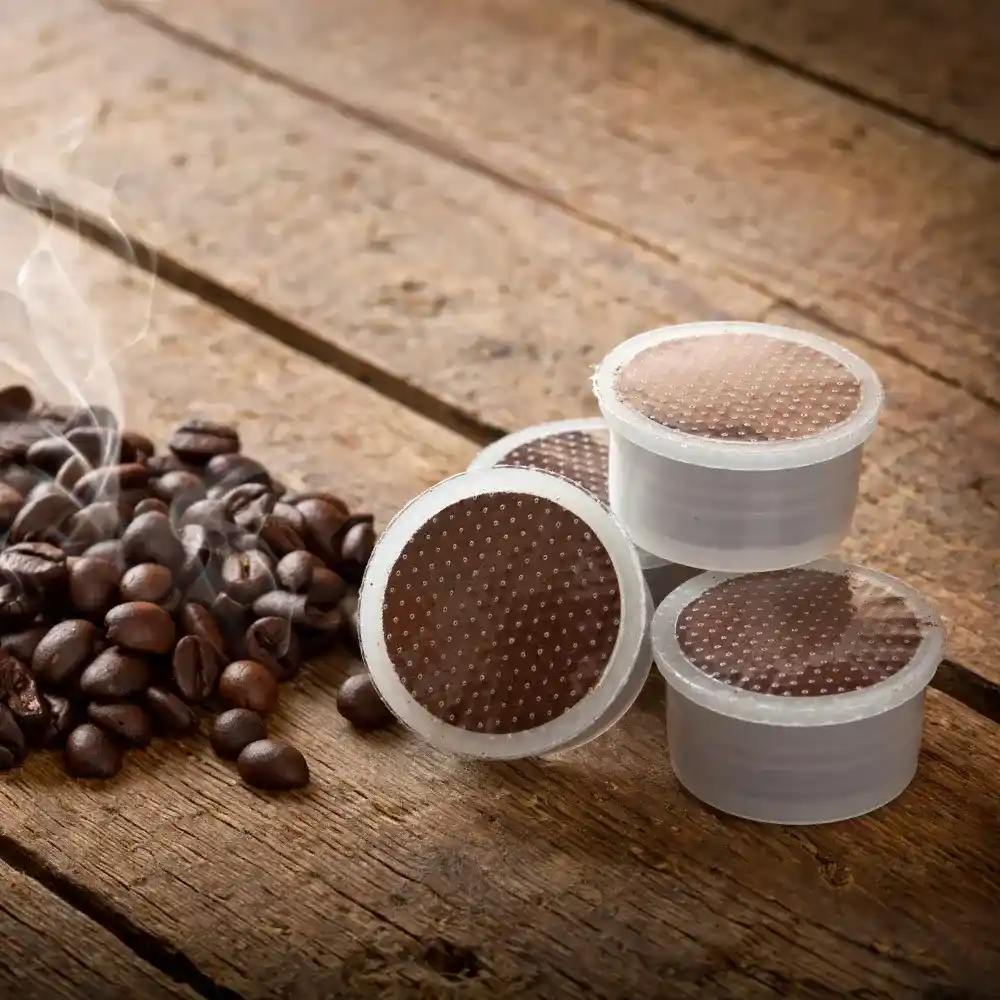
Coffee pods, for all their convenience and consistency, often come under fire for their environmental implications. Traditionally, the significant use of plastic and aluminum in their packaging led to valid concerns about waste and recyclability. However, the industry has been actively working towards more sustainable solutions.
- Compostable Pods: Some manufacturers now offer compostable coffee pods, made from plant-based materials. These eco-friendly pods break down naturally, reducing landfill waste.
- Recycling Programs: Additionally, certain brands have implemented dedicated recycling programs. Users can collect used pods and return them to the manufacturer for specialized recycling.
- Reusable Pods: Another alternative is reusable coffee pods. These devices are filled with coffee by the user and can be reused, drastically reducing waste.
Ground Coffee and Its Waste Impact
Ground coffee, traditionally viewed as the more eco-friendly option, still has its environmental considerations. While its impact is largely dependent on the consumer’s habits, it is worth noting some general points.
- Packaging Waste: These grounds often come in large, one-time-use bags which can contribute to plastic waste if not properly recycled.
- Coffee Grounds: The grounds themselves are biodegradable and can be composted, reducing the amount of waste going to the landfill. (2)
- Energy Use: Grinding the beans and using certain brewing methods can consume more energy than using coffee pods.
Sustainable Practices: How Can Consumers Make a Difference?

As consumers, our habits can influence the environmental impact of our coffee consumption. Here are a few ways to foster sustainable practices:
- Choose Responsibly: Look for brands that prioritize sustainability, from fair-trade and organic beans to compostable packaging.
- Recycle or Compost: Recycle coffee packaging when possible, and compost the grounds to minimize waste.
- Opt for Reusable: Whether it’s a reusable coffee pod, a coffee filter, or a travel mug, opting for reusable items can greatly reduce waste.
- Buy Local: If possible, buy coffee from local roasters to reduce the carbon footprint associated with transporting this beverage.
Remember, every small step towards sustainable consumption helps. By making informed choices and adopting eco-friendly habits, we can enjoy our favorite brew and take care of our planet simultaneously.
Convenience and Cost
Coffee, beyond its captivating aroma and taste, is often a beacon of comfort and ease in our busy lives. The convenience and cost associated with your brewing method can greatly influence your daily routine and budget. In this section, we’ll weigh the ease and expense of coffee pods against the economical and engaging process of using ground coffee.
The Convenience of Coffee Pods: Is It Worth It?
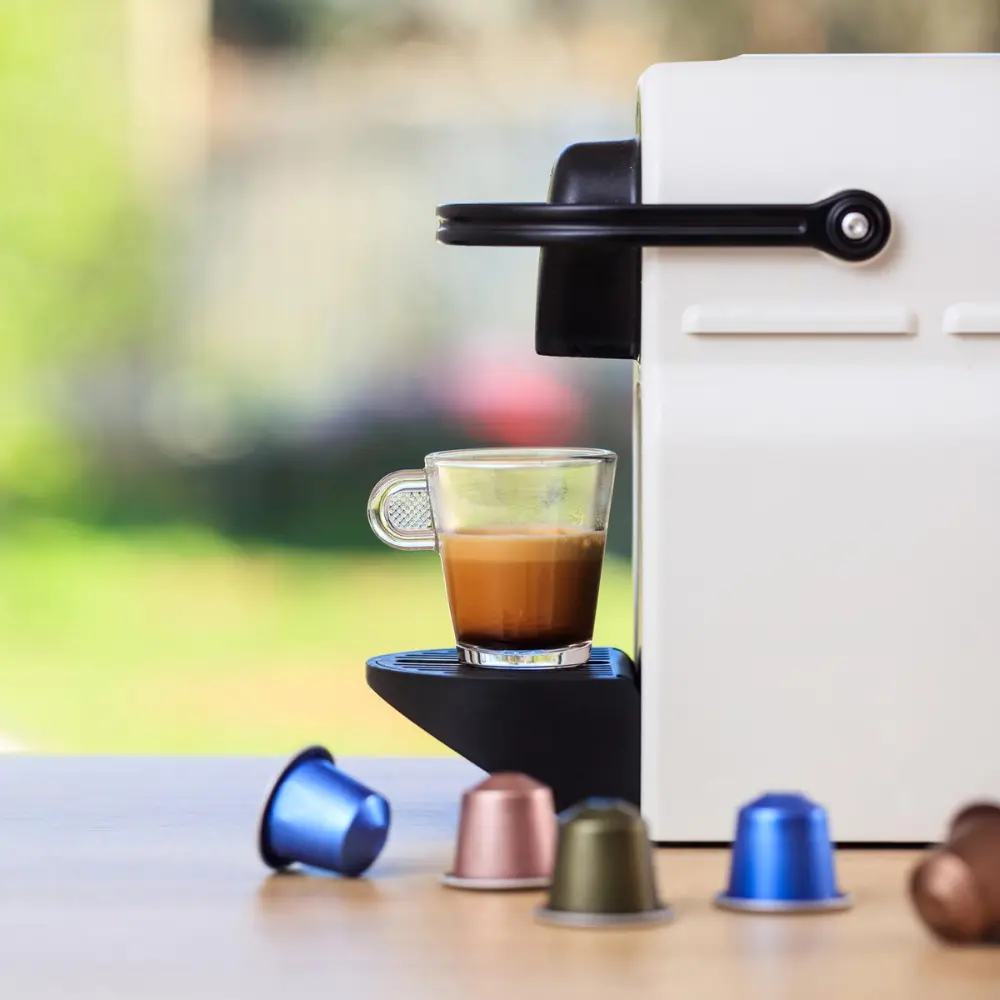
The greatest allure of coffee pods is arguably their convenience. This convenience, however, comes with its own considerations:
- Speed and Simplicity: Coffee pods take the guesswork out of brewing. Insert a pod into your machine, press a button, and a consistent cup of joe is ready in seconds.
- Clean-up: The post-brewing clean-up is typically as simple as disposing of the used pod, making the process extremely user-friendly.
- Cost: While the upfront cost of a pod machine can be significant, the real expense lies in the pods themselves. These can add up over time, making it a pricier option compared to traditional ground coffee.
The Economics of Ground Coffee: Budget-Friendly Brews
Ground coffee, while requiring a bit more effort, presents a compelling case for budget-conscious lovers of this delightful beverage:
- Cost per Cup: The price per cup of coffee brewed from ground coffee is usually significantly lower than that of coffee pods. This can result in substantial savings over time.
- Investment in Equipment: While you might need a grinder and a coffee maker (if you don’t already have them), these are one-time purchases. High-quality models can last years, making the long-term cost quite reasonable.
- Bulk Buying: Buying ground coffee in bulk can be a great way to save money, especially if you consume this beverage regularly.
Time-Efficiency Battle: Coffee Pods vs. Ground Coffee

When it comes to time efficiency, coffee pods, and ground coffee cater to different lifestyles:
- Coffee Pods: As discussed, if you’re constantly racing against the clock, the speed and simplicity of coffee pods could be a lifesaver. They deliver a decent brew almost instantaneously, without the fuss of measuring, grinding, or complex cleanup.
- Ground Coffee: For those who view the brewing process as a mindful ritual rather than a chore, the extra minutes invested in preparing ground coffee might not only be acceptable but also enjoyable.
To sum up, when it comes to convenience and cost, your choice between coffee pods and ground coffee will depend on what you value most—time, money, or the craft of brewing.
Conclusion
In conclusion, the debate of Coffee Pods vs. Ground Coffee doesn’t necessarily yield a clear winner—it’s a matter of personal preference. Whether you prioritize the ease and consistency of coffee pods or savor the craft and versatility of ground coffee, the best choice is one that suits your taste, lifestyle, and environmental values. While the advancements in the industry of this lovely beverage continue to cater to a variety of consumer preferences, at the heart of it all remains our shared love for a comforting, delightful brew.
FAQ
Can I use coffee pods in different coffee makers?
These pods are typically designed for specific coffee makers and are not universally compatible, although some brands offer a more comprehensive range of compatibility.
Is ground coffee better for espresso-based drinks?
Yes, these grounds tend to be better for espresso-based drinks as you can control the grind size and extraction, both crucial for creating the rich and strong flavor profile of espresso.
How long can I store ground coffee before it goes stale?
While it can vary, ground coffee is usually at its best within two weeks of opening if stored properly in an airtight container in a cool, dark place.
What factors affect the taste of coffee brewed from coffee pods?
The taste of a cup of joe brewed from coffee pods can be affected by factors such as the quality of the beverage inside the pod, the brewing technology of the machine, and the water quality.


